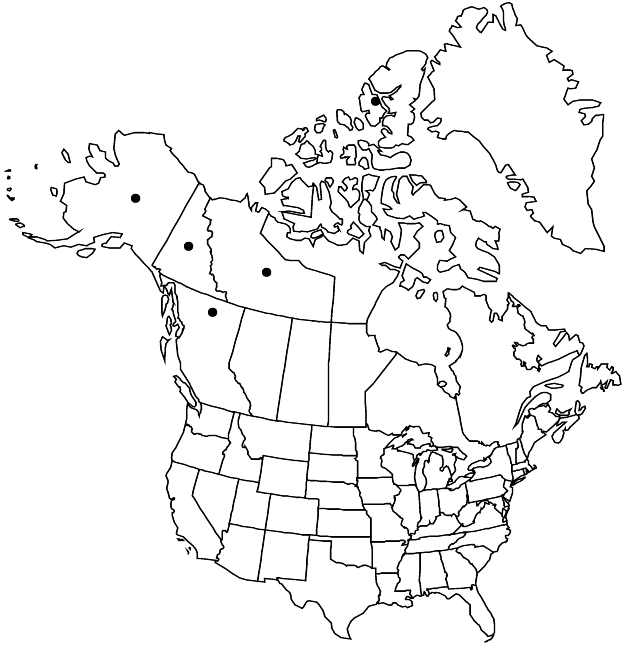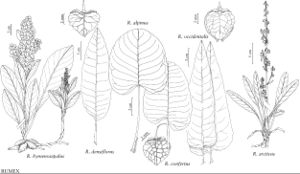Difference between revisions of "Rumex arcticus"
in A. T. von Middendorff, Reise Siber. 1(2,1): 29. 1847.
FNA>Volume Importer |
imported>Volume Importer |
||
| Line 8: | Line 8: | ||
}} | }} | ||
|common_names=Arctic dock | |common_names=Arctic dock | ||
| + | |special_status={{Treatment/ID/Special_status | ||
| + | |code=F | ||
| + | |label=Illustrated | ||
| + | }} | ||
|basionyms= | |basionyms= | ||
|synonyms={{Treatment/ID/Synonym | |synonyms={{Treatment/ID/Synonym | ||
| Line 77: | Line 81: | ||
|publication title=in A. T. von Middendorff, Reise Siber. | |publication title=in A. T. von Middendorff, Reise Siber. | ||
|publication year=1847 | |publication year=1847 | ||
| − | |special status= | + | |special status=Illustrated |
| − | |source xml=https:// | + | |source xml=https://bibilujan@bitbucket.org/aafc-mbb/fna-data-curation.git/src/bb6b7e3a7de7d3b7888a1ad48c7fd8f5c722d8d6/coarse_grained_fna_xml/V5/V5_1064.xml |
|subfamily=Polygonaceae subfam. Polygonoideae | |subfamily=Polygonaceae subfam. Polygonoideae | ||
|genus=Rumex | |genus=Rumex | ||
Revision as of 23:28, 27 May 2020
Plants perennial, glabrous or nearly so, with fusiform, oblique rootstock, occasionally with horizontal, short-creeping rhizome. Stems erect, simple or branched in distal 2/3 (then with few, comparatively short branches), 10–70(–100) cm. Leaves: ocrea deciduous or partially persistent at maturity; blade narrowly lanceolate, lanceolate, or oblong-lanceolate, normally 5–15(–20) × 1.5–5 cm, base cuneate to broadly cuneate, rarely truncate or very weakly cordate, margins entire or rarely indistinctly repand, flat, apex acute or subacute. Inflorescences terminal, occupying distal 1/2–2/3 of stem, interrupted, paniculate, simple or nearly so (branches, when present usually less than 7–8 cm). Pedicels articulated in proximal 1/3, filiform, 5–13(–17) mm, usually not more than 2–2.5 times as long as inner tepals, articulation weakly evident, not swollen. Flowers 7–15 in whorls; inner tepals ovate, 4.5–7.5(–8) × 4–6(–7) mm, base truncate to weakly cordate, margins entire, apex obtuse or subacute; tubercles absent. Achenes reddish brown, 3–4 × 1.5–2 mm. 2n = 40, 120, ca. 170, ca. 200.
Phenology: Flowering late spring–summer.
Habitat: Moist tundra, marshes, river valleys, sandy and gravelly shores and slopes
Elevation: 0-1000 m
Distribution

B.C., N.W.T., Nunavut, Yukon, Alaska, ne Europe, n Asia (arctic and subarctic zones).
Discussion
Rumex arcticus is polymorphic, as are R. aquaticus in the narrow sense and R. occidentalis. However, unlike R. aquaticus and R. occidentalus, it is represented by at least two chromosome races (G. A. Mulligan and C. Frankton 1972; Á. Löve 1986). Plants morphologically transitional between R. arcticus and R. aquaticus were described from Kamchatka as R. kamtschadalus (= R. arcticus var. kamtschadalus). The same forms occasionally occur in northwestern North America. According to Á. Löve and D. Löve (1975b) and Á. Löve (1986), they are usually tetraploids (2n = 40) and deserve recognition at the species level. However, they are not always morphologically distinct from R. arcticus. The group needs additional study, and at present I prefer to keep the tetraploid plants provisionally within R. arcticus, regarding them as var. kamtschadalus.
A few highly sterile specimens with mostly abortive flowers, which I have seen in Alaskan herbarium material, most probably represent hybrids between tetraploid and 12-ploid races of the R. aquaticus group.
Plants with unusually wide, triangular-oblong, or almost ovate leaves were described as var. latifolius Tolmatchew. This seems to be a predominant variety on the Beringian coast of Chukotka and Wrangel and Ratmanov islands (A. I. Tolmachew 1966). I also have seen at least two collections of this variety from the western coast of Alaska. The enigmatic var. perlatus Hultén may belong here (see discussion under 8. R. lapponicus).
Rumex arcticus has been reported from Churchill in northeastern Manitoba (H. J. Scoggan 1978–1979, part 3). That record needs confirmation because some northern forms of R. arcticus and R. occidentalis are similar.
Selected References
None.
